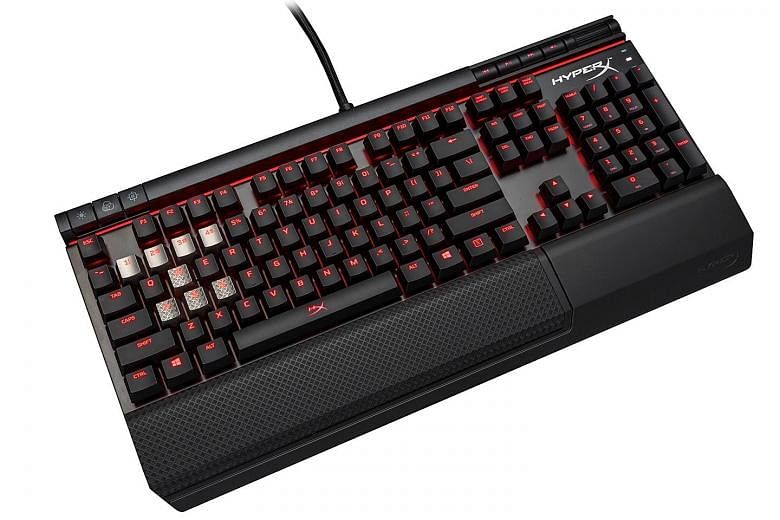The Kingston Alloy Elite is the follow-up to the company's first mechanical gaming keyboard, the Alloy FPS, which I tested about half a year ago.
The Elite has the same sturdy, solid steel frame as the FPS. It has similar gaming features, too, such as anti-ghosting and the ability to register all your key strokes when they are pressed at the same time (n-key rollover). But it expands on the FPS' minimalist design and features.
This means adding in extra keys, such as dedicated media-playback keys and shortcut keys. These changes translate into a taller and heavier (by about 500g) keyboard than the FPS (1kg).
On the FPS, these extra keys are integrated with the Function keys - so it takes a bit more effort to trigger them.
One of these keys is the Game mode button, which disables the Windows logo key. Doing so prevents you from being interrupted in the middle of a game because of an accidental Windows logo key press.
My favourite feature is a volume wheel at the top right corner that makes it convenient to adjust the computer's audio levels.
Like the FPS, the Elite has six LED backlight modes. Press a key to cycle through all the different modes.
-
TECH SPECS
-
PRICE: $199
SWITCHES: Cherry MX Red (linear, 45g actuation force)
FEATURES: Red backlighting, full N-key rollover and media controls
RATING
FEATURES: 3/5
DESIGN: 4/5
PERFORMANCE: 4/5
VALUE FOR MONEY: 4/5
OVERALL: 4/5
Unlike many gaming keyboards, Kingston's models do not come with any software, which means you cannot customise the LED backlights or create custom macros. It suits me as I am mostly indifferent to the keyboard LED lighting schemes. But those who play multiplayer online battle arena (MOBA) or massively multiplayer online games (MMOs) may find the lack of macros a turn-off.
The Elite needs to be connected to two USB ports, though it mitigates this by having a USB pass-through port for other peripherals like a mouse.
But the keyboard cable cannot be detached like you can with the FPS, for when you are travelling with your gaming gear to a LAN party.
The Elite does include a detachable wrist rest that snaps onto the keyboard. It is plastic with a soft touch coating that is comfortable to use.
There is also a set of silver textured replacement keycaps for the WASD and numbers 1 to 4 keys that are easier to locate by look and feel.
My review set comes with Cherry MX Red switches that require minimal force to register a key stroke. These keys are suitable for fast-paced games. I prefer the more forceful Cherry MX Blue switches for typing, though my nearby colleagues will probably appreciate the quieter operation of the Red switches.
Given my personal preferences, I fared slightly worse in typing tests with the Elite's Red switches, compared with another mechanical keyboard with Blue switches.
But, don't worry, the Elite comes with Blue, Brown or Red Cherry MX switches, so buyers can choose their preferred type.
At $199, the Elite keyboard costs about $30 more than the FPS. The premium is worth it, as the additional buttons are handy and the wrist rest reduces fatigue during a long gaming session. But those who need RGB backlighting or macros will have to keep looking.
Vincent Chang
• Verdict: For those who do not need fancy RGB backlighting or macros, the Kingston Alloy Elite performs well and is reasonably priced.


